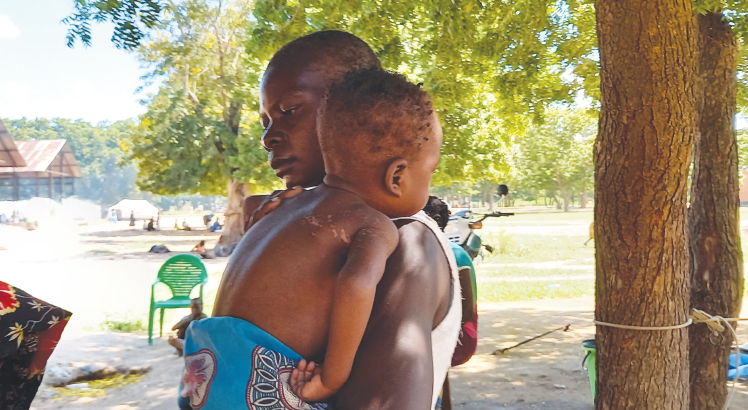Data counts in every decision we make,” says Eunice Chisale, nutrition promoter for Chigwirizano and Chisomo care groups in Nkusa Village in Thyolo District.
She leads a network of women volunteers who go door-to-door in her neighbourhood to collect information on every baby who is exclusively breast fed for six months and the older ones who eat six food groups.
The race to get numbers required to beat malnutrition begins with lead mothers, each relentlessly visiting 10 to 12 families with children aged under five, pregnant women and lactating mothers.
“We happily make these trips to collect vital information that helps us tackle malnutrition at the community level before it gets out of hand. We don’t want families to waste time and money seeking medical treatment for conditions prevented by eating diverse locally available foods,” says Chisale.
Widespread stunting, wasting and other manifestations of malnutrition in the hilly locality compelled the community change agents such as her to hit the road confronting the preventable public health crisis at home.
“During the home visits, we discuss nutrition tips, share the importance of eating six food groups and collect basic nutrition information such as the number of meals a household takes per day and if the diet includes meat, fish, fruits, beans and vegetables,” she explains.
The community agents also measure the middle-upper arm circumference of under five children for early signs of malnutrition.
A cluster leader shares the findings with the care group chairperson, who works with 10 lead mothers. Chisomo and Chigwirizano comprise 11 lead mothers each.
“The lead mothers quickly detect and stop malnutrition because they live with the families they frequently visit. When they notice risk factors or early warnings, they immediately intervene and inform relevant change agents,” says Chisale.
When the data exposes any scare or gap, the volunteers and nutrition coordination committees brainstorm solutions.
The rollback strategies for possible malnutrition include masanje, the communal cooking demonstrations where women openly teach one another how to prepare diversified diets from locally available foods.
The rollout of the circumference in communities where children live helps care groups detect malnutrition before it becomes severe and complicated by opportunistic complications.
“Measuring children’s circumference in the community, we can quickly tell if the child is stunting or wasting. When the reading is within the green band, they are healthy. Yellow means they are at risk of slipping into severe malnutrition if not assisted urgently. Red means they need assistance from the nearest facility,” she explains.
Chisale can afford a smile because the count of stunted children in her area has gone down from 10 a month to one in four to five months since the roll-out of Afikepo Nutrition Project in 2016.
The project, funded by the European Union through Unicef and Food and Agriculture Organisation, aims to combat malnutrition so that every child meets their potential.
It encourages exclusive breastfeeding for children below six months and diversified diets from locally available foods, especially for those below five years.
“Since Afikepo taught us the importance of eating six food groups, we seldom encounter stunting and underweight children. Previously, these cases were common because most people lacked meat. Many didn’t own any animal to give them meat and milk. Unfortunately, fish is expensive here because we live far from the lakes and rivers,” she narrates.
Presently, many families in the tea-growing area own poultry and livestock.
The locals are also learning modern food production skills, especially crop diversification, through farmer field schools.
“Through the farmer-to-farmer learning sessions and data from the homes, we realised that children were stunting amid plenty because many families were only good at farming, not preparing their food to beat malnutrition,” explains community-based facilitator Maria Kamangeni.
Now the farmers work closely with nutrition promoters to hone food preparation skills.
The post Data powers community race against malnutrition appeared first on The Nation Online.
 Moni Malawi
Moni Malawi 

